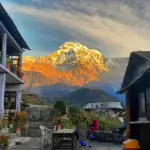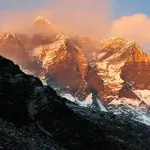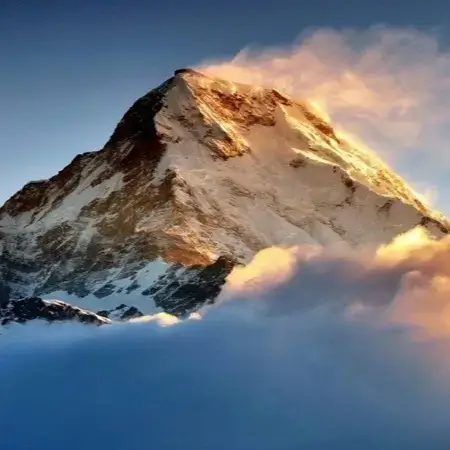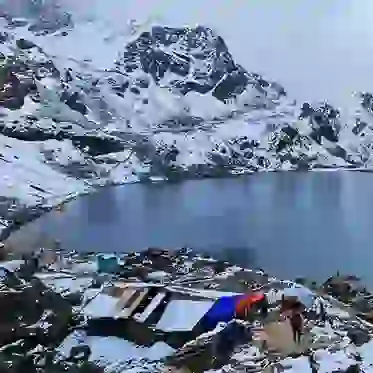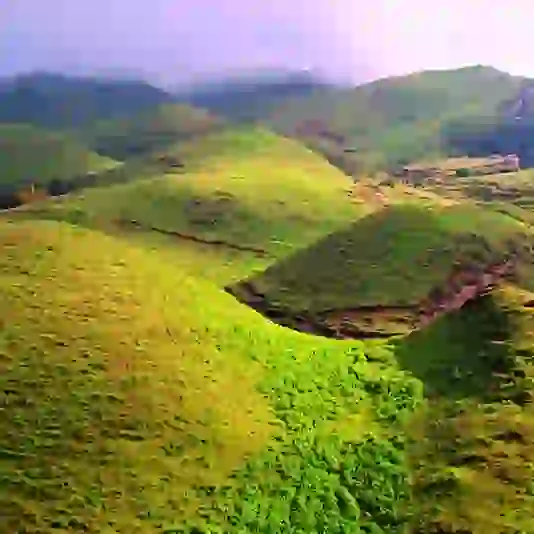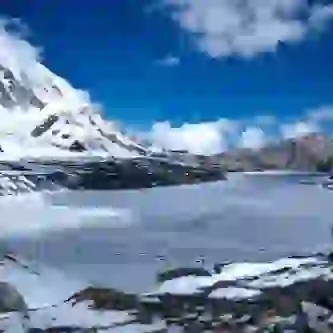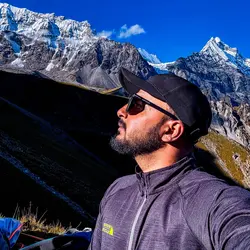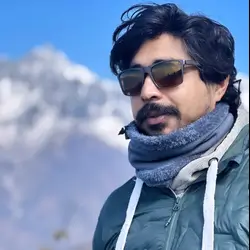Nepal is a mystical beauty; it has a natural and cultural heritage that popularizes the world. Concealed within other best-magical landscapes ever revealed to humanity are the revered water bodies, most sacred due to their spiritual significance and the divine presence.
From the holy Bagmati River in Kathmandu to the calm waters of Phewa Lake in Pokhara, both water bodies have been revered by Nepalese. They are home to ancient traditions and rituals.
Join us in this blog and awake the quench for curiosity as we head deeper into this almost magical land of the sacred lakes and rivers to dapple this most beautiful of tapestries, Nepal, with its secrets.
Making Sense of Nepal's Spiritual Waterscapes
From the ancient Hindu temples to magnificent Buddhist stupas, Nepal reflects a variegated cultural and religious heritage, fostered by running spiritual traditions across thousands of years.
From glacial lakes, mountain springs, and rivers to hot springs, the origin of these water bodies is strongly connected to the geologic history and topography of the area.
In fact, the majority of the rivers and streams are or sacred according to the people of Nepal with most of them associated with religious and spiritual beliefs.
Besides the rivers, other glaciated lakes are also believed to be more sacred places in Nepal. There is a myth that the goddesses and gods formed these lakes from their tears or with the footsteps of deities.
There's a spiritual relationship with water bodies in Nepal; these are part of the cultural and religious heritage and continue to be highly valued and revered by the people in this modern age.
The Significance of Water Bodies in Nepali Culture and Traditional Beliefs
Water bodies occupy a special place in Nepalese culture and religion. According to these, such places are identified as having inspiration and spiritual renewal.
Spiritual beliefs on water bodies
In Hinduism, water symbolizes the purification of everything, and from water springs divinity. To most Hindu followers in Kathmandu, taking a dip in the sacred Bagmati River or the Kali Gandaki River in Mustang will wash their sins, and one is headed to the path of salvation.
Similarly, in Buddhism, water equates to a symbol of purity and clarity of mind. Water is widely used in most Buddhist monasteries and even temples located in rivers for numerous purification rituals.
Role of Water Bodies in Festivals and Rituals
Water bodies have been highly relevant in Nepalese culture and religion, as well as in festivals and rituals in the country.
The Bisket Jatra, one of the biggest festivals related to water, was celebrated once a year in Bhaktapur. The locals all come together at this celebration to pull jointly a chariot carrying the idols of Lord Bhairava and Goddess Bhadrakali, which is then submerged into a nearby pond.
According to the understanding of the Indian community, this ritual is seen and promoted as representing the triumph of good over evil and the renewal of life.
It is also a significantly important festive aspect of water in Chaite Dashain, which is another festival viewed during March or April. During the festival, people bathe in holy rivers and lakes, making the water even more sacred through the prayers they invoke to the gods and goddesses.
Likewise, Gai Jatra is celebrated in Kathmandu during August. Hindus believe that the cow rides the spirits to the world beyond in spiritual guidance.
In Local Communities
Besides festivals and rituals, the role of water bodies is very important in local communities for irrigation, fishing, and transportation in many parts of Nepal.
For instance, Phewa Lake in Pokhara is a popular spot with tourists; at the same time, local professional fishermen earn their living here. Bagmati River in Kathmandu serves for irrigation but is also a significant pilgrimage place.
The Most Sacred Lakes and Rivers in Nepal
The fantastic water bodies in Nepal, which hold great spiritual significance for the local communities, have quite a list. Here are the top sacred lakes and rivers in Nepal that are worth visiting:
Fewa Lake, Pokhara

Fewa Lake is a place of attraction in Nepal, among the most visitors, located in Pokhara. The beautiful settling is between green forests and mountains.
Visitors to the lake can do boat rides, fishing, and hiking in the hills surrounding the lake's waters. The local communities hold religious and sacred the lake, always organizing their rituals and many other festivals along its shores on several occasions.
Rara Lake of Mugu

Rara Lake lies in the district of Mugu in the farthest west of Nepal. The region is an ideal expanse of a lake surrounded by snow-clad mountains and thick forests, and the natural beauty of Nepal is represented here.
Tourists take three days trekking to the lake in order to enjoy the serenity and supplemented tranquility of the lake. The lake inhabits different species of fish and other marine creatures and most of the people go fishing.
Gosaikunda Lake in Langtang

Langtang National Park is renowned for having major diversity in flora and fauna. Gosaikunda Lake is located in this regime; the lake is very strongly held sacred for both Hindus and Buddhists and is believed by the two major ethic groups of people in the area to be founded by Lord Shiva himself.
Likewise, travellers may go trekking around the lake, which will take approximately four days and adore the sight of the surrounding mountains. Movement in the lake is also perfectioned as a symbolic retreat centre for performing meditation and spiritual practice.
Karnali River, Western Nepal

It is considered of the utmost importance by many; the Karnali features as one of the longest rivers in Nepal, supplying water for irrigation and fisheries. It is a habitat for a number of species of flora and fauna that are watery and aquatic in nature and highly endangered, like the Gangetic dolphin.
They can have a rafting trip on the river, which is quite an enjoyable experience and is coupled with the scope of getting a sneak peek at the clean natural beauty of Nepal.
Bagmati River in Kathmandu

The Bagmati River flows down by the Pashupatinath Temple and is regarded to be one of the most important places for people undertaking pilgrimage from Hinduism.
The visitors can take a walk up to the edges of the rivers, visit the Pashupatinath Temple that lies on the river banks, and attend the renowned Bagmati Ganga Aarti every evening.
Divine Waters: Spiritual Significance of Sacred Water Bodies of Nepal
Right in the center of the Himalayas is Nepal, sheltering the most scared and magnificent waterbodies anywhere. They have been nabbed objects of worship from the immemorial times, synonymous with myths or legends hoary about their origin to spiritual significance.
Let us read in wonder through some of the magical stories these holy water-bodies have themselves for the place they occupy in the country's rich cultural and religious legacy.
Mythical Tales and Legends
We need to understand the significant water bodies in Nepal through the many myths associated with these water bodies. For example, it is said that the sedated Fewa Lake in Pokhara harbours the Hindu deity Barahi.
Barahi, the goddess of power and strength, installed by Lord Vishnu to end the terror of the demon at his supreme abode, accomplished the mission of the goddess. In gratitude, the locals built a temple for her on the eastern fringe of the lake.
Sacrificial Offerings and Special Rituals
Water bodies in Nepal have great religious importance and hence are considering the key sites for holding ceremonies and making offerings. In Hindu culture, water bodies such as the Ganges River are endowed with divine qualifications capable of washing away a person's mortal sins.
Pilgrims throng the river banks to do their ritual worship, wherein they offer flowers, incense, and lamps as a demonstration of their devotion. Similarly, Buddhists take the act of providing water as practices believed to be meritorious and purifying.
Role in Spiritual Practices
In addition to their symbolic role, Nepal's water bodies have played massive roles in religious practices, such as meditation and yoga. The serene environment of Rara Lake in Mugu, for example, makes it the best place for meditational retreats.
Nice coastlines and spectacular views allow people to attain solace while they face the waters, normally used partially for deepening spiritual connections.
Makes Concrete
Water occupies a specific space within the culture and religious life of Nepal through its symbolism of purification, rejuvenation, and the circle of life.
You shall undoubtedly find typical cremation rituals along the River Bagmati, running right through the heart of Kathmandu. Symbolically, its waters shall carry the soul to the other side of life, urging one spirit on as another arrives.
Challenges: The babirusa remains
In an era of fast-depleting natural resources, the acceptance of challenges and efforts in regard to the conservation of Nepal's sacred water bodies goes without saying.
Nepal's aquatic beauty has not been spared by human activity's adverse effects. Nepal's water bodies are supposed to be preserved at any cost to maintain the ecological and cultural integrity of the region.
Pollution and Environmental Degradation
Possessing a significant threat to these resources, the pollution of lakes and rivers in Nepal is caused by industrial and human wastes, rainwater runoff from agricultural fields, and the discharge of untreated sewage.
Moreover, encroachment in the protected areas and illegal fishing have caused the degradation of critical assets.
Conservation Efforts by Local Communities and Organizations
Nonetheless, local communities and organizations are carrying out several efforts to save the sanctified water bodies, come what may.
The government of Nepal has also acted on them through policy and regulatory measures to ensure a decrement in pollution and the promotion of sustainable practices.
However, much still remains to be desired about actual practical conservation activities and educational efforts to sensitize the populations to the importance of these water bodies.
Through humanness and collective efforts, it is possible to reduce the negative impacts of pollution and encroachment on sacred lakes and rivers and to ensure that they are preserved for the generations ahead in Nepal.
Nepal Journeys - Water Bodies Blessed Traveler's Guide to Responsible and Sustainable Tourism.
As travelers, we're responsible to be keen in observing and respecting the culture around and the environment in which we find ourselves.
This is particularly true for sacred pools/water bodies in Nepal, which have very close ties to the spirit and spiritual status of the local people. Travelling tips for a much more meaningful and sustainable visit include the following things so that the experience becomes complete and compelling. Respecting Local Customs and Traditions Attrib Before visiting holy water in the case of Nepal, one must even study the local people's customs and traditions of that place. This might involve being dressed modestly or not wearing shoes before one enters a temple or shrine and refraining from certain activities, such as swimming or fishing. We must also keep in mind the local customs when paying respect to these sites, such as the offerings of flowers and incense. Livelihood Sources and Pollution Avoidance Pollution is a harsh reality, and water bodies in this country also face severe environmental degradation, making any improvement essential. Please be mindful, and don't use plastic or other non-biodegradable products, taking care with waste disposal. Adding to that, it is necessary to ensure the support of sustainable tourism, including accommodation and transportation. Recruiting local guides The cultural and spiritual significance of these sacred water bodies in Nepal can be understood clearly from such local guides. They can present historical and traditional details regarding the site and offer help to find your way through the local customs and codes of etiquette. Hugging the Sacred: Thoughts on My Final Visit to the Water Bodies of Nepal; that said, the narrative journey of the spiritual significance of some sacred water bodies found in Nepal comes, and in the end, it is only our sincere wish that across Nepal's immense cultural and religious heritage, this article has added a tremendous amount of light. More than that, we encourage travellers to visit such masterpieces of nature, become a part of local traditions and culture, and take care of their impact on the environment. It can be by nothing but the right ways of sustainable tourism that allow these sacred water bodies to be a source of inspiration and tranquillity for generations to come. So let yourself go in for an exploration of hidden treasures dwelling in water bodies throughout the country of Nepal, and see for yourself what magic and mystique these reservoirs are endowed with.



